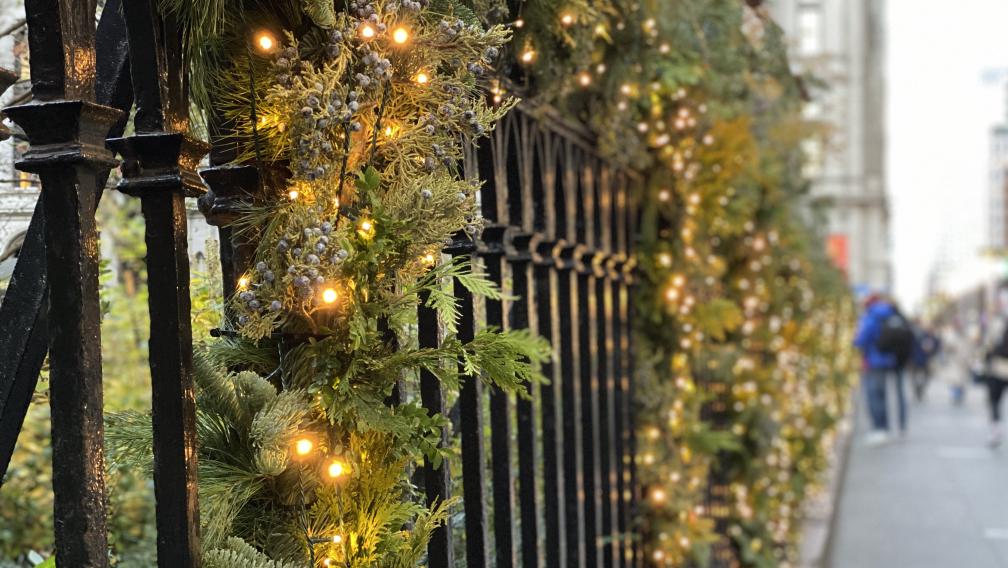Advent Approaches

This is a week of special days. On Thursday, the United States observes Thanksgiving Day, holiday shopping takes center stage on what has come to be known as “Black Friday,” and Saturday is a kind of New Year’s Eve.
Really. Saturday is New Year’s Eve on the Church calendar because the new Christian year begins on Sunday, November 27, the First Sunday of Advent.
Advent is the first liturgical season of the Church year and runs for four weeks, until Christmas Eve. The Episcopal Church, of which Trinity Church Wall Street is a parish, describes Advent as a time of expectation and anticipation for Christmas.
Advent has been observed since at least the sixth century, perhaps longer, and initially lasted six weeks, rather than four, with more of an emphasis on fasting and penitence, similar to, but not as intense, as the penitential season of Lent. The traditional liturgical color of Advent vestments is purple or violet, although Trinity uses the color blue.
It’s customary for churches, as well as individual families, to display an Advent wreath with five candles. One candle is lighted each Sunday of Advent with the fifth candle, known as the Christ Candle, lit on Christmas Eve.
Each week of Advent is customarily devoted to a theme: Hope, Peace, Love, and Joy. Advent devotionals, another tradition, offer insight, usually based on scripture, for reflection, prayer, and meditation during the season. Members of Trinity Movement Choir this year are offering short, daily performances featuring butoh-style dancing as a somewhat nontraditional form of Advent devotional.
Much Advent tradition relates to music. Annual performances of Handel’s Messiah, Lessons and Carols, and Benjamin Britten’s A Ceremony of Carols are just three events on Trinity’s busy Advent calendar.
The start of a new Church year also means a change in the schedule of scriptures. Like many churches, Trinity follows the three-year Revised Common Lectionary which, this coming year, is designated as Year A. That means the gospel readings for the next twelve months will be a mix of the Gospel according to Matthew, along with selections from the Gospel according to John.
Speaking of scripture, Advent begins with gospel readings on the first Sunday that speak of being prepared for the "end times," followed by scripture on the second and third Sundays, in which John the Baptizer is a primary character, as he calls for repentance, both private and public. By the fourth Sunday, the gospel turns to Mary and especially Joseph, as they prepare for the birth of Jesus.
Advent runs parallel with the secular and commercial run-up to Christmas and much of its emphasis in modern times has focused on anticipation and expectation of the holiday. However, through the scripture chosen for the season and even much of the music, the Church provides reminders that Advent is a time to consider serious topics, including a world radically disrupted by the Incarnation, the Word made flesh, and the call to live in anticipation not only of a Christmas holiday, but also of a second Advent at a time still to be determined.





